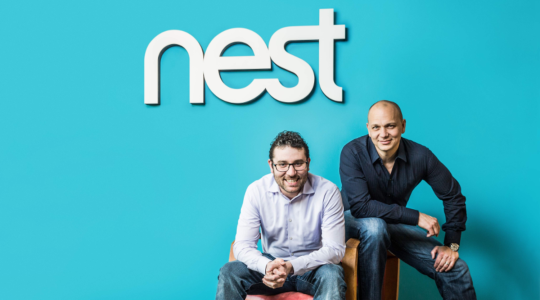Nest Co-Founder Matt Rogers On The Secrets To Nest’s Success

While the Nest founders came into Kleiner Perkins with nothing more than a makeshift prototype, it was their passion and vision for a connected home that swayed Randy Komisar and the firm to make an early investment. Five years after launching the smart thermostat and other connected devices for the home, Google acquired Nest for $3.2 billion in 2014.
On a recent KPCBventured podcast, I spoke to Matt Rogers, founder and VP of Engineering at Nest Labs (and my husband), about how he helped scale the company from a garage startup to a significantly larger organization today.
Reflecting back on the founding story of Nest, Matt shares some lessons about leadership and how early product decisions shaped the company’s long-term success.
LESSONS IN LEADERSHIP
Leaders enable people to do their best work
Great leaders can inspire and influence team members to achieve a common goal. Identifying and removing roadblocks is the key to helping the team solve problems faster or finding the resources necessary to do so. And as an organization scales, it becomes even more critical to empower individuals to make decisions and move processes forward. Effective leaders should also help identify strengths and weaknesses of individual team members — by doing so, teams are not only more self-aware, but they can actively work to complement those strengths and weaknesses within the team.
Climb the mountain by taking one step at a time
There is a long road to building a successful product or company, but if you break the tasks into smaller pieces, it won’t seem so overwhelming. Take one step at a time and be sure to celebrate the major accomplishments and milestones along the way. Nest’s vision is to become a platform for the connected home, but to get there, the team had to focus initially on one product: the thermostat. Over the past 5 years, the team has expanded its product line to include the Nest Protect smoke and CO alarm and Nest Cam.
Communication is key
In January 2014, when Google acquired the company, Nest was a team of about 300 employees. Today, only two years later, it is a significantly larger organization. With that kind of fast paced growth, communication has become even more crucial to success. Communication within teams is important, but also across teams. Constant and consistent communication is required as teams get bigger. Codifying and documenting decisions is part of effective communication across organizations.
Build a culture that learns from failure and experience
When scaling an engineering organization, acknowledge failures and learn from them. Being able to learn quickly from mistakes is an advantage that can be built into the overall process. Experience matters, which is why Matt believes hiring experts is necessary. At Nest, leaders are both developed from within the company, as well as recruited from outside to teach and grow with the team at Nest.
FOUNDINGHISTORY OF NEST
The hardest decision made prior to launching Nest’s first product
Matt knew the company had only one shot to launch the Nest thermostat right, so he decided to take more time to iterate, test the product, and collect data from their beta users. Just three months before launching the product, the team made a critical decision to shift away the focus from forcing customers to save energy to giving users a choice of prioritizing energy savings or comfort. This marked a fundamental shift in how the product interacted with users; and required an overhaul of product algorithms and months of testing. Despite being a difficult decision for the team, it was ultimately the right decision for the customer.
A good business model requires thinking through the end-to-end experience
Before starting any hardware company, you must think about the end-to-end experience and service. Building a cool product or widget is not enough. Users need to be continuously engaged and your product development has to support that as well. An example of this is how Nest not only iterates on individual products, but thinks about complementary devices that will ultimately contribute to a smarter, more connected, home.